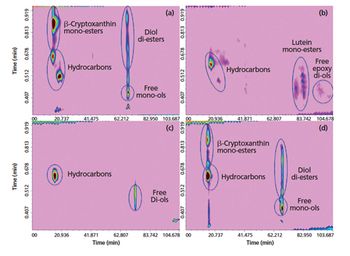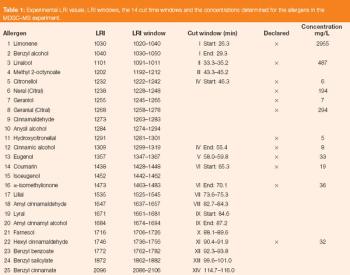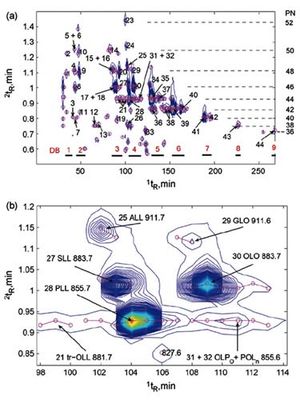
This article highlights an advantage of porous graphitic carbon columns, that is their resistance at high temperatures, for the analysis of parabens in foodstuffs.
Paola Dugo is a full professor of food chemistry at the University of Messina.

This article highlights an advantage of porous graphitic carbon columns, that is their resistance at high temperatures, for the analysis of parabens in foodstuffs.

In this extended special feature to celebrate the 35th anniversary edition of LCGC Europe, key opinion leaders from the separation science community explore contemporary trends in separation science and identify possible future developments.

Carotenoids are a class of natural pigments, widely distributed in vegetables and fruits. A comprehensive two-dimensional liquid chromatography (LC×LC) method, based on the use of a cyano and an octodecylsilica column, placed in the first and second dimension, respectively, was applied to evaluate carotenoid composition and stability in selected overripe fruits representing the waste generated by a local food market. This research also evaluates if post-climacteric biochemical changes are linked to carotenoid degradation in the investigated fruits. A total of 22 compounds was separated into seven different chemical classes in the two-dimensional space, and identified by photodiode array (PDA) and mass spectrometry (MS) detection. The results prove that the waste generated by the large distribution of food still represent an important source of bioactives that could be used for other purposes.

Carotenoids are a class of natural pigments, widely distributed in vegetables and fruits. A comprehensive LC×LC method, based on the use of a cyano and an octodecylsilica column, placed in the first and second dimension, respectively, was applied to evaluate carotenoid composition and stability in selected overripe fruits representing the waste generated by a local food market.

This review illustrates the benefits of LC?C in food analysis and discusses the combination of LC modes used in the two dimensions, and the nature of the samples analyzed.

A novel system for fully automated comprehensive two-dimensional liquid chromatography is presented.

The complexity of many food samples places a great demand in terms of both separation capabilities and specificity of detection. In this article, a novel system for fully automated comprehensive two-dimensional liquid chromatography (LC?LC) is discussed.

This article is focused on the detailed qualitative analysis of the fatty acids and the unsaponifiable constituents of a vegetable oil derived from a food-industry waste product, namely lemon seeds.

An overview of important GC–MS techniques currently used in food analysis is described. Considerable attention is devoted to the use of the mass spectrometer, in relation to its poptential for separation and identification. The importance of comprehensive GC?GC is also discussed.

Sample preparation is a crucial part of the analysis of foodstuffs. Current sample preparation techniques used in food analysis are reviewed and the advantages and drawbacks of each one are discussed.

In this review, the most recent LC–MS approaches are discussed, as well as the technical requirements for linking an LC system to a mass spectrometer. The advantages of on-line 2DLC in the "comprehensive" mode are also illustrated and selected applications for the analysis of common foodstuffs, such as triacylglycerols, carotenoids and polyphenols, are described. Finally, future trends for LC–MS in food analysis are reported.

On-line heart-cut LC–GC and, more recently, comprehensive LC–GC (LC?GC) are very powerful analytical techniques because of the combination of the selectivity features of LC with the high efficiency of GC. This article presents an overview of the most recently used interfacing systems, as well as applications in the food analysis.

A fast heart-cutting liquid chromatography–gas chromatography (LC–GC) method for the analysis of mineral oil saturated hydrocarbons (MOSHs) in a range of widely consumed foods is described.

Using narrow-bore column fast GC combined with rapid scanning qMS to analyse flavours and fragrances is described.

A total of fourteen cuts were defined because the retention time difference between several skin sensitizors was only slight.

Published: May 2nd 2023 | Updated:

Published: May 1st 2012 | Updated:

Published: May 1st 2012 | Updated:

Published: May 1st 2012 | Updated:

Published: May 1st 2012 | Updated:

Published: January 1st 2012 | Updated: